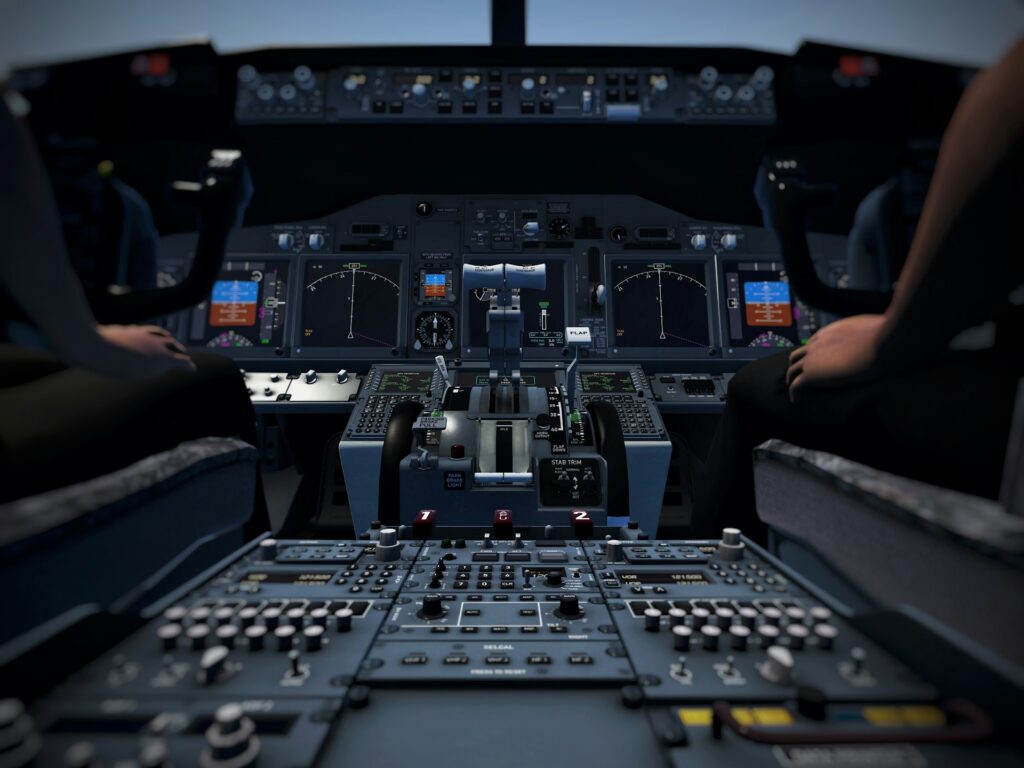Cognitive reflection is the ability to override intuitive, automatic responses with deliberate, analytical reasoning to make more accurate decisions along with check-list utilization. An important aspect of which is its potential to facilitate awareness, control, and monitoring processes to help identify potential thinking errors and encourage the deployment of alternative strategies.

A 2024 Ergonomics study by Mohan et al., provides some compelling results for better understanding how pilots make critical decisions under pressure. They employed flight simulations in which pilots had to handle a series of in-flight emergencies in airspace around Bogotá’s El Dorado International Airport – high, hot, turbulent, with mountainous terrain.
The study was conducted with a sample of 104 seasoned pilots in simulated naturalistic decision-making (NDM) scenarios. Here’s a synthesis of the findings:
Cognitive Reflection Drives Superior Decisions: The study’s use of the Cognitive Reflection Test (CRT) revealed that pilots with strong analytical thinking (high CRT scores, β=0.21, p=0.02) excel at making effective decisions by overriding intuitive biases. This ability to shift from automatic (Type I) to deliberate (Type II) processing, as per dual-process theory (Kahneman, 2011), is critical in high-stakes scenarios like engine failures or instrumentation loss. Cognitive reflection also moderates the impact of flight time, with low-CRT pilots relying heavily on experience to improve performance, while high-CRT pilots leverage analytical skills for consistent excellence (p=0.005, R²=0.29). Psychologically, this underscores the power of reflective thinking to mitigate errors from heuristic biases, such as those seen in weather-related misjudgments (Walmsley & Gilbey, 2016).
Workload Shapes Cognitive Performance: Using the NASA Task Load Index (NASA-TLX), the study found that high temporal demand and frustration impair decision-making (p<0.001), while perceived performance quality boosts it (p=0.008), accounting for 56% of decision-making variability (R²=0.27). In other words, excessive workload depletes cognitive resources like attention and working memory consistent with theories of cognitive overload (Young & Stanton, 2002). The modest effect size may reflect the simulator’s lack of real-world risk, which reduces emotional intensity (Hancock & Warm, 1989).
Flight Experience is Necessary but Not Sufficient: Greater flight time correlates with better decision-making (β=0.15, p=0.08), supporting the role of experience in building expertise (Smith et al., 2016). However, its impact is nuanced in that pilots with lower cognitive reflection benefit more from additional hours, as seen in the moderation analysis. Psychologically, this mirrors the principle that experience without reflection risks rote repetition, as evidenced by errors in the 1989 Kegworth crash (Cooper, 1990). Effective decision-making requires cognitive flexibility to apply experience adaptively, as demonstrated in the Hudson River landing (NTSB, 2010).
Keith Norris, RTC, MTC is a Counsellor in New Westminster, BC specializing in Therapy for Depression and Anxiety and Couples Counselling. He maintains a Client Centered method to his therapy but will combine other systems to custom fit each Client’s needs.
Stress and Metacognition Fall Short: Surprisingly, everyday stress, measured by the Perceived Stress Scale (PSS), didn’t significantly predict decision-making, despite pilots reporting high stress levels (Lee, 2012). This may stem from the simulator’s controlled setting or the PSS’s moderate reliability (Cronbach’s α=0.595). Metacognition, assessed via the Metacognition Self-Assessment Scale (MSAS), also showed no significant effect, likely because it measured trait metacognition rather than real-time monitoring. Psychologically, these findings suggest limitations in self-reported measures and the need for dynamic assessments (e.g., eye-tracking) to capture how pilots monitor their thought processes during tasks (Craig et al., 2020). Real-world stressors, like personal or industry pressures, and active metacognitive strategies could still play critical roles, warranting further study.
Implications for Aviation Psychology: These findings demand a paradigm shift in pilot training. Cognitive reflection training, such as CRT-style exercises, can strengthen analytical skills, reducing reliance on potentially flawed intuition. Workload management strategies, like mindfulness or stress inoculation, are essential to preserve cognitive resources. The study validates Competency-Based Training (CBTA) for preparing pilots for unexpected scenarios, crucial as younger pilots with fewer flight hours assume Captain roles amid industry growth (Keller et al., 2019). Psychologically, this aligns with optimizing human performance by fostering self-regulation and bias resistance, ensuring pilots operate as adept cognitive decision-makers, not just technical experts.
Future Directions: The study’s single-airline scope and male-dominated sample limit generalizability, reflecting aviation’s demographics but highlighting the need for diverse cohorts. Simulators may underplay real-world risk’s emotional impact, so field studies are needed. Direct measures of metacognition and stress during tasks could reveal their true influence. Longitudinal research on cognitive reflection training’s efficacy could further refine CBTA, enhancing safety in an evolving industry.
Cognitive Reflection Training involves exercises that challenge pilots to solve problems requiring analytical thinking, such as specifically designed scenario-based simulations that prompt them to question initial instincts and evaluate data methodically. These drills aim to strengthen Type II processing to enhance decision-making under pressure.
Want to Learn More?
Reference
Mohan, A., Simonovic, B., C. Vione, K., & Stupple, E. (2024). Examining flight time, cognitive reflection, workload, stress and metacognition on decision making performance for pilots during flight simulation. Ergonomics, 1–13. https://doi.org/10.1080/00140139.2024.2404642

